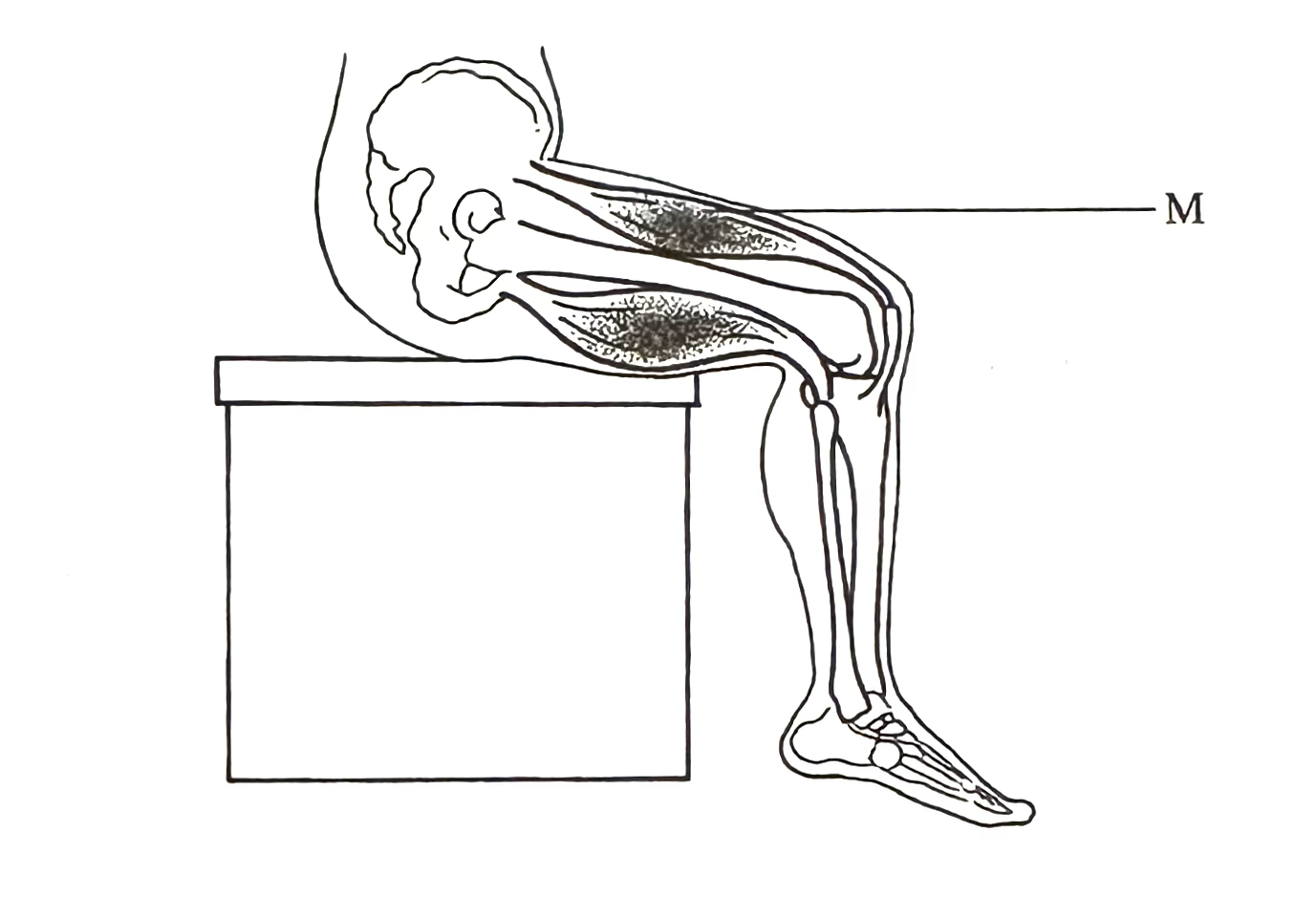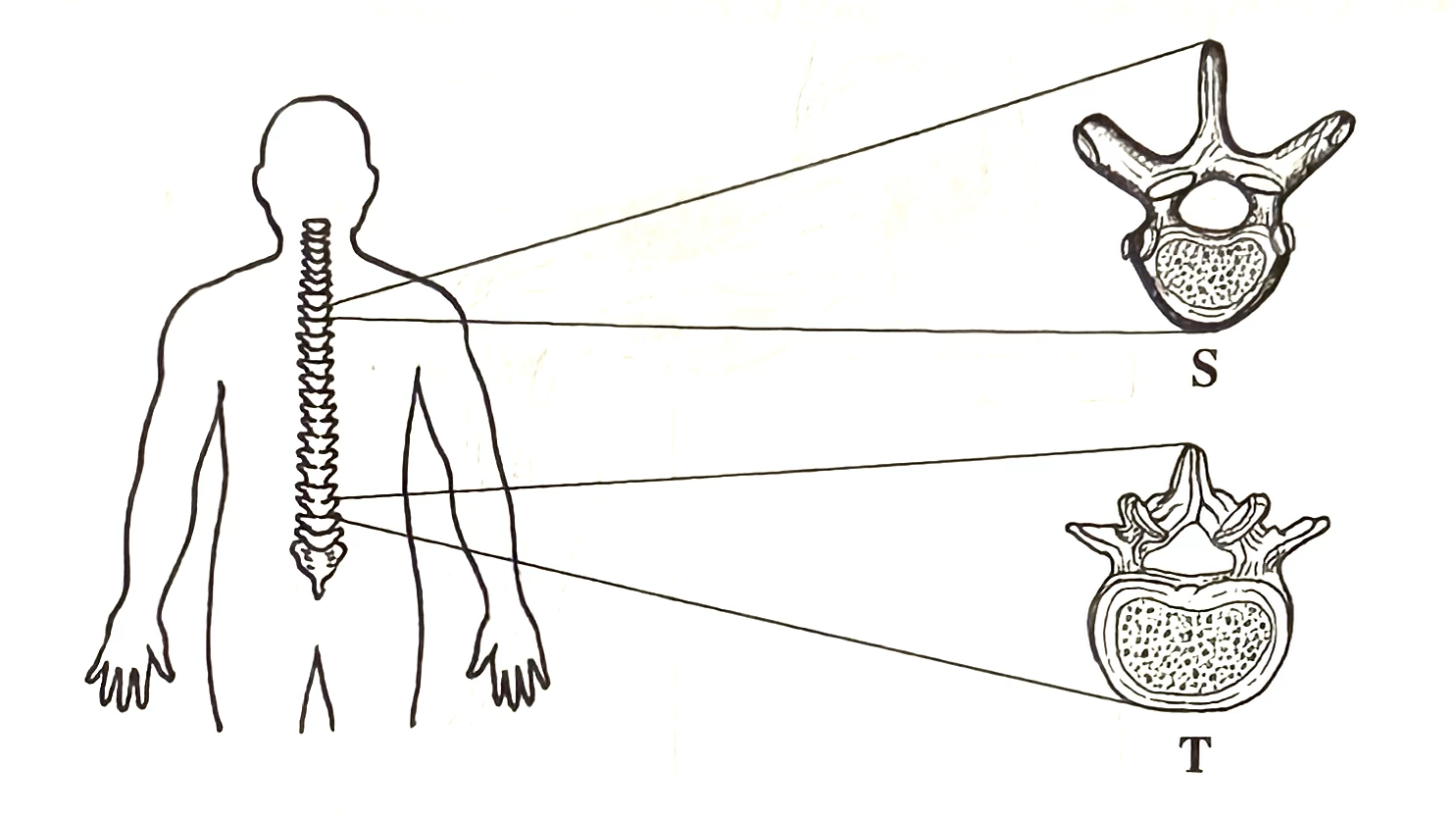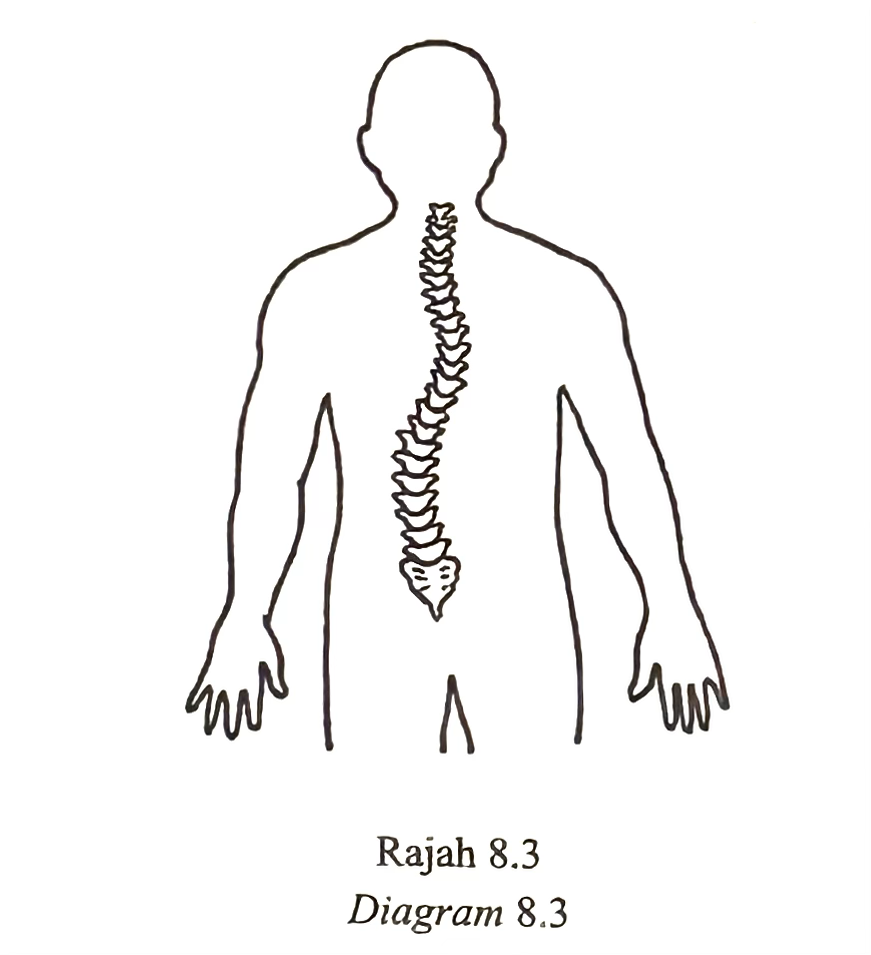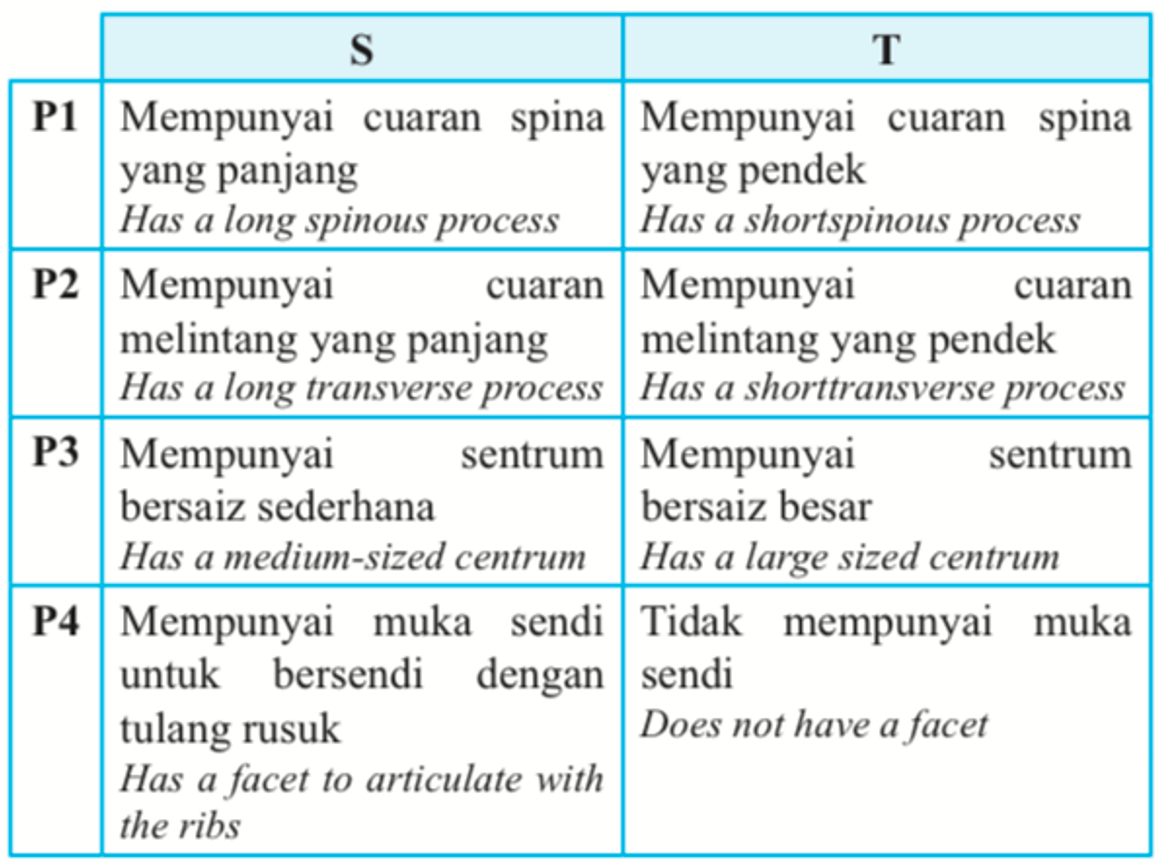Question 8:
Diagram 8.1 shows muscle M of a football player that is injured during a training session.

(a)(i) Suggest one method that can be used to treat the injury and give a reason. [2 marks]
(a)(ii) After a week, the player participates in a training session. His kick is not as great as before the injury. Explain why the condition occurs. [3 marks]
(b) Diagram 8.2 shows a normal human vertebral column.

Based on Diagram 8.2, differentiate vertebrae S and T in terms of structure. [2 marks]
(c) Diagram 8.3 shows a human vertebral column who experiences health issues related to the musculoskeletal system. This condition occurs due to certain factors.

Describe how the condition occurs. [2 marks]
Answer:
(a)(i)
M1: Using the R.I.C.E method// Rest the injured part// Use ice packs/ wet towels// Elevate the injured part// apply pressure
R1: Can reduce swelling// Promote muscle tissue recovery
M2: Use anti-inflammatory drugs / painkillers
R2: Can reduce pain
M3: Use a walking aid
R3: Can reduce pressure on muscles// Relax muscles
M4: Physiotherapy // Physical therapy // Heat treatment // Electroactive plastic polymers
R4: Can strengthen muscles// Improve blood circulation
M5: Use kinestatic tape// Kinesiology
R5: P1/P2/P3/P4
M1 + R1 which matches
(a)(ii)
1: Muscles have not fully recovered// Insufficient time for muscle recovery
2: Muscle contraction is less occur
3: Less pulling forcw is produced
4: Legs cannot be straightened// Pain when kicking/straightening// kicks are not strong
(b)

(c)
1: Due to genetic factors// Spinal injury/ Tumor/ Cerebral palsy / Muscular dystrophy
2: Abnormal growth of the spine during puberty
3: The spine bends to the side // S/C form // Scoliosis
Diagram 8.1 shows muscle M of a football player that is injured during a training session.

(a)(i) Suggest one method that can be used to treat the injury and give a reason. [2 marks]
(a)(ii) After a week, the player participates in a training session. His kick is not as great as before the injury. Explain why the condition occurs. [3 marks]
(b) Diagram 8.2 shows a normal human vertebral column.

Based on Diagram 8.2, differentiate vertebrae S and T in terms of structure. [2 marks]
(c) Diagram 8.3 shows a human vertebral column who experiences health issues related to the musculoskeletal system. This condition occurs due to certain factors.

Describe how the condition occurs. [2 marks]
Answer:
(a)(i)
M1: Using the R.I.C.E method// Rest the injured part// Use ice packs/ wet towels// Elevate the injured part// apply pressure
R1: Can reduce swelling// Promote muscle tissue recovery
M2: Use anti-inflammatory drugs / painkillers
R2: Can reduce pain
M3: Use a walking aid
R3: Can reduce pressure on muscles// Relax muscles
M4: Physiotherapy // Physical therapy // Heat treatment // Electroactive plastic polymers
R4: Can strengthen muscles// Improve blood circulation
M5: Use kinestatic tape// Kinesiology
R5: P1/P2/P3/P4
M1 + R1 which matches
(a)(ii)
1: Muscles have not fully recovered// Insufficient time for muscle recovery
2: Muscle contraction is less occur
3: Less pulling forcw is produced
4: Legs cannot be straightened// Pain when kicking/straightening// kicks are not strong
(b)

(c)
1: Due to genetic factors// Spinal injury/ Tumor/ Cerebral palsy / Muscular dystrophy
2: Abnormal growth of the spine during puberty
3: The spine bends to the side // S/C form // Scoliosis